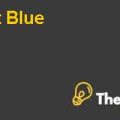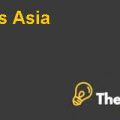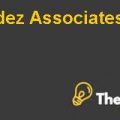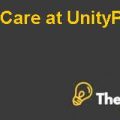TELEMEDICINE OPPORTUNITY OR DISTRACTION
A. Introduction
Telemedicine is one of the emerging technologies in the market place. Information technology has a played a vital role in helping Telemedicine to gain momentum in the market place and has helped the medicinal industry to capitalize on its operational efficiencies. Telemedicine refers to delivering services related to healthcare at distant places. For Telemedicine, the primary factor is distance, in which the patient is treated virtually, by the use of information and communication technologies for online diagnosis, treatment, and quick aid.
Moreover, Telemedicine has now advanced to offer data repository options for the doctors so as to have a quick background check for the patients’ previous visit and prescription. It helps the healthcare providers to have a breast of knowledge not only about the patient but also about the latest prevention and cures for a particular disease (Conde, Jose G.; 2010).
Telemedicine is characterized by the delivery of healthcare services in distant locations. In addition, use of information technology to support customer back up information is one of the modern technologies that helps in making the operational health systems efficient. The concept of Telemedicine came from the link between physicians and radio stations in remote areas. This gave rise to link between medicinal activities and internet, which is already widespread amongst most of the people in the world. Since then, Telemedicine faced several ups and downs in gaining wider acceptance amongst patients and physicians. Later, its usage increased widely for several purposes such as referral services, direct patient care, consultation to the patients in the distant locations, educating both patients and the physicians on the medical situation and the new preventions, and it is used to have a data base for patients under a particular physicians’ consultancy (Rogove, 2012).
B. QUESTIONS AND ANSWERS
I. From the perspectives of stroke patients, their families, and community hospitals and Partners Healthcare, what needs does TeleStroke serve?
The needs that TeleStroke serves for its prospective customers are in terms of its improved customer communication. The use of modern technology that is networking and the information technology infrastructure by TeleStroke Software gives the patients faster access to the health professionals. In addition to this, as stroke was previously not taken very seriously, hence, it was then given the name of Brain attack, which sensitized not only nurses but also the patient’s family. The increased convenience provided by the TeleStroke Software helped in saving valuable time for both patients especially when the situation was severe and time couldn’t be wasted in scans and tests. With a self sustainable financial position as of 2011, TeleStroke provided real time consultation services to its customers. Not only this, but TeleStroke also helped Partners health care in billing procedures and in conducting research studies on stroke treatment and outcomes through the data repository maintained by the software.
With improved access to the primary healthcare facilities online, the patients also get access to quality tertiary care. With its wider acceptance in the healthcare sector, TeleStroke also provides tertiary care institution as per their request and guidance to help them set up their own telemedicine software’s. For this purpose, they have expanded their business in networking and has named its new business as TeleStroke Network Partner Program. In addition, it helps the in medical research, which strengthens the service equality by efficiently managing the bottlenecks in the process.
II. The Resource-Based View says that management’s central task is to assemble and oversee resources, which consist of tangible and intangible assets as well as capabilities. A McAfee article states that successful implementation of some systems requires investments in complementary resources *COMMENT*
The McAfee view suggests that holding on to the resources the organization holds at present and makes the most out of them. TeleStroke at present holds tangible and intangible both in the form of relationship with the customer and in the form of medical equipment and the emergency personnel including nurses and physicians, super users, nurses etc. It uses these to earn revenues by charging the spokes hospitals a $10,000 annual consultation fees. In addition to this, the company also needs to invest in the complementary resources such as employee training as this company is characterized completely by the service provided by the emergency personnel (Rogove, 2012).
For this purpose, the personnel needs training and the organization needs to be restructured. At partners health care most of the physicians were given additional subspecialty training inclusive of neonatology, or pediatric intensive care, or how to deal with acute strokes. TeleStroke service started with training twenty of its specialists at Martha Vineyard Hospital in order to help them use the program more efficiently. Not only this, but they needed to follow the practice routinely so as to fasten the process of looking at a patient because from the case it is identified that time is brain.........................
This is just a sample partial case solution. Please place the order on the website to order your own originally done case solution.
Innovative IT applications, such as patient services are telemedicine consultations can save lives and reduce costs. However, despite the extensive pilot testing, some of these services have achieved long-term viability. TeleStroke service Partners Healthcare, fully controlled and Massachusetts General Hospital Neurology department is self-supporting and is a vital necessity. Doctors involved in some hospitals interested in using telemedicine for other medical applications (beyond the treatment of stroke.) If the partners to expand their services? What organizational, clinical and technical issues can arise if they are expanding their offers telemedicine? How these issues are best managed? Case is designed for MBA or advanced undergraduate course in IT management. We use this case in the first module of the course of the strategic IT management. Module I, use it for Business Value, introduces students to the resources on the basis of management and the mechanisms by which IT (hardware, software, networks and information resources) can add value to the business, such as being embedded in the product or service (Netflix case), through the creation of valuable data, allowing management to make more informed decisions and improve operations (Entertainment and Harrah Pursuing Tax Cheats cases), and, as a platform to work together (this telemedicine case). "Hide
by Janis L. Gaughan, Monica J Garfield Source: North American Case Research Association (NACRA) 20 pages. Publication Date: March 1, 2012. Prod. #: NA0186-PDF-ENG













